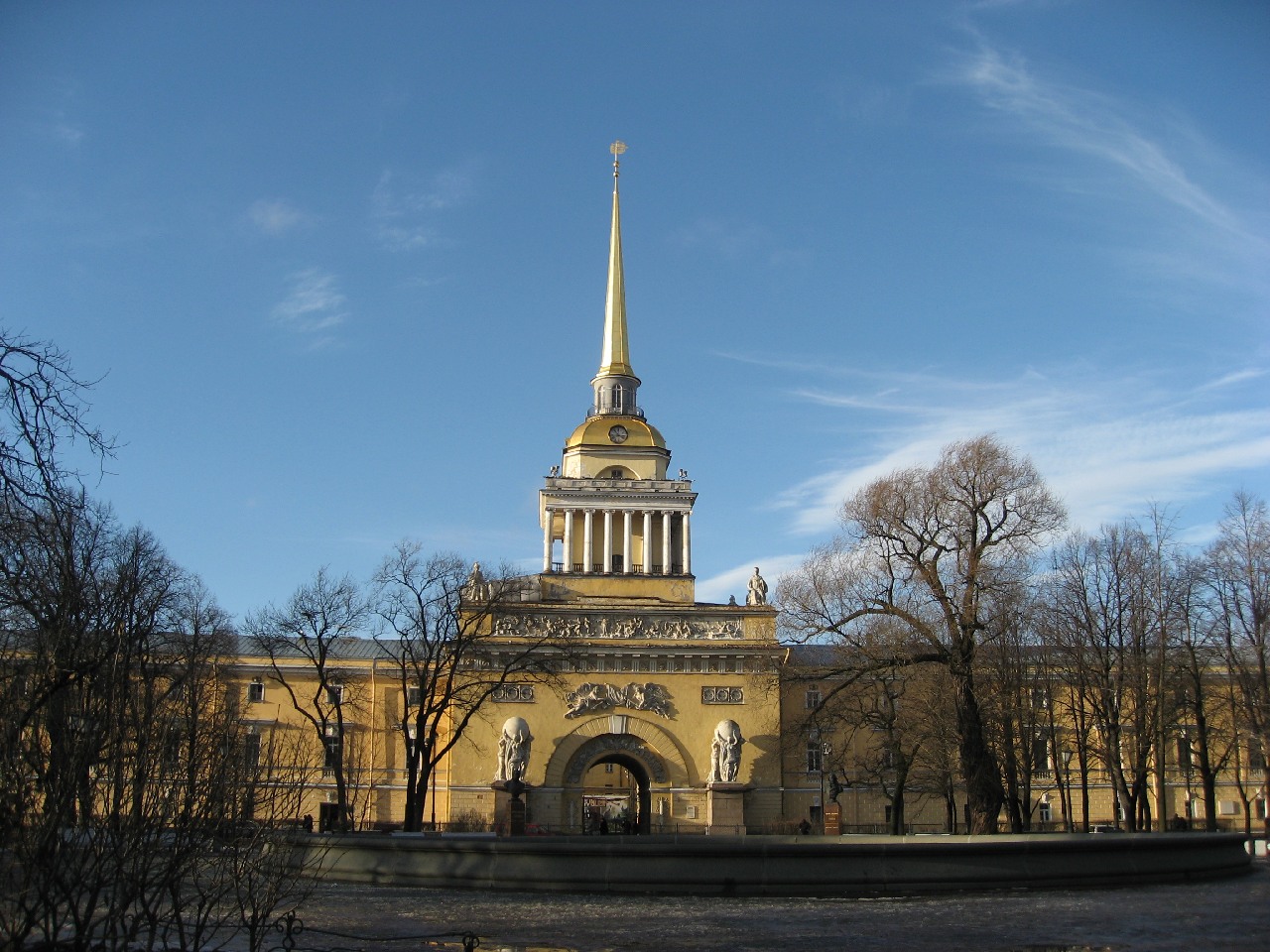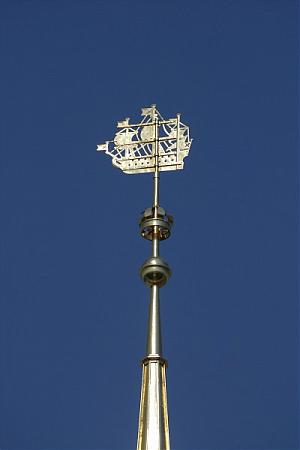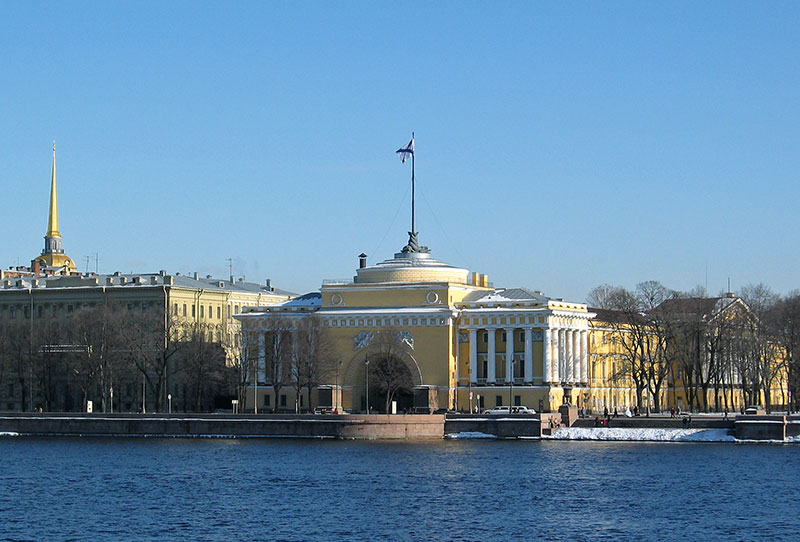|
One of the magnificent expressions
of naval triumphalism - the Admiralty, initially founded by Peter the Great in 1704
as a fortified shipyard, in the course of the time became purely administrative
in function, and after a disastrous fire in 1783 professor Adrian Zakharov was
commissioned to design a suitable replacement. He maintained the original plan
of the building, but turned it into a marvelous example of the Russian Empire
style, with rows of white columns, wonderful relief detail and numerous
statues. The Admiralty was fortified to
be an extra defense for the newly acquired territory of the Neva
delta. The gilded spire of the Admiralty
(and particularly its weather-vane korablik - "the little ship") is
another of St. Petersburg’s
famous landmarks.
The responsibilities of the
Admiralty Board had been changing throughout its history. It supervised the
construction of military ships, ports, harbors, and canals and administered
Admiralty Shipyard. The Admiralty Board was also in charge of naval armaments
and equipment, preparation of naval officers etc. In 1802 the Admiralty Board
became a part of the Ministry of the Navy. Along with the Admiralty Board,
there was also the Admiralty Department in 1805-1827 with the responsibilities
of the Chief Office of the Ministry. In 1827 the Admiralty Board was turned
into the Admiralty Council, which would exist until the October Revolution of
1917. In new Russia the
historic Admiralty Board has been re-born as the Maritime Board having broad
functions to coordinate Russia's
maritime future.
|





